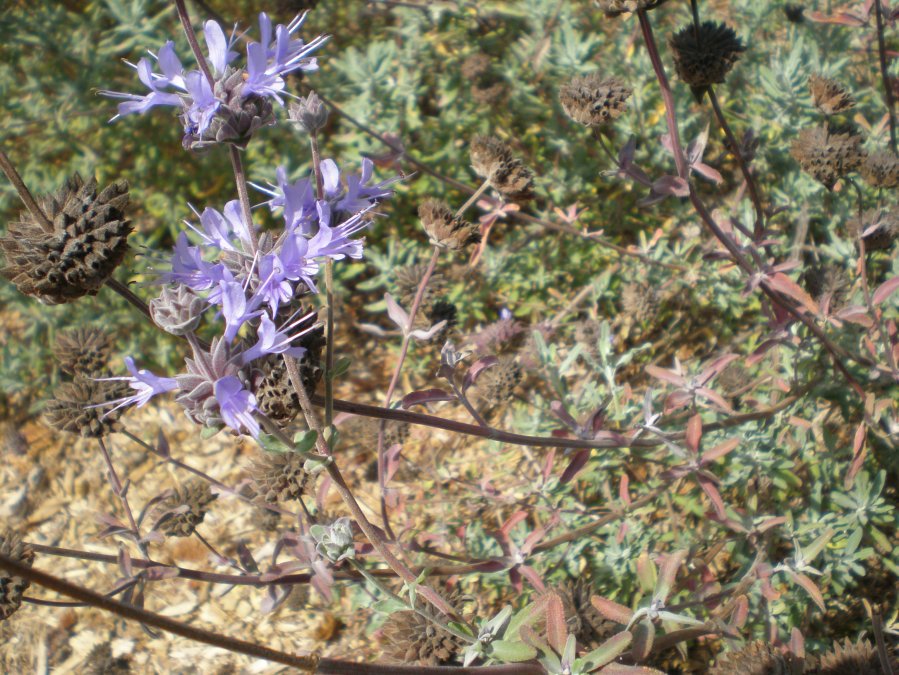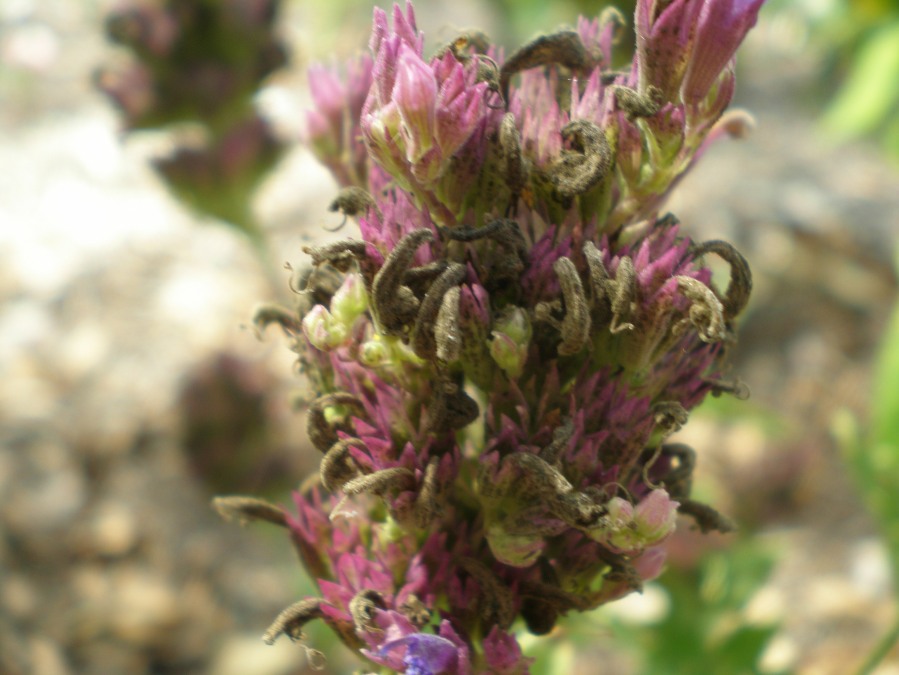Fri
28
Dec
2018
Protecting Frost Tender Plants
We are forecast to have frost tonight here in Hemet, so I wanted to remind everyone of a few key points regarding frost tender plants.
Let me start by explaining what frost is. The term frost can mean that dew froze on the leaves of the plants overnight, or it can also refer to the temperature dropping below freezing (32 degrees F). So your tropical plants can be damaged whether the conditions are wet or dry. Some plants that are very sensitive can even be killed if left out too long in temperatures that are below freezing.
We usually get several nights of frost each winter. Some areas of our valley get more frost than others, so what plants you can grow can vary a lot depending where you are. If you're in Valle Vista it's slightly warmer, whereas San Jacinto is the coldest area. The reason for this is that the cold air goes to the lowest spot, and Valle Vista is slightly higher than San Jacinto, generally. The warmest spots are hilltops, and the coldest spots are the low spots in between.

Fri
07
Dec
2018
Winter Yard Care

Here in inland Southern California, we have to maximize on the little winter that we do get! Here are a few suggestions so you will be prepared for the winter, as well as the spring to come.
The main thing we always tell people is to be sure and prune any roses and deciduous fruit trees that you have in January. This includes all rose types- bush, tree, climber, groundcover, etc. Deciduous fruit trees would be any fruit tree that drops it's leaves for the winter, such as a peach, apple, plum,pear or many others. This does not include citrus trees. This time of year is when you should do the hard pruning on these plants, and also remove any dead twigs and branches. Also be sure to clean up any plant debris around the base of the plants. This helps prevent the spread of disease. We have our pruning demonstrations coming up the first two weekends of January. You can view the event information here.
You should also prune and thin other deciduous trees and shrubs, such as crape myrtles. Any trees that have a very thick canopy should be thinned out so wind blows through the tree rather than just hitting up against it.
Wed
27
Jul
2016
Mycorrhiza- What's that?!

Did you know that your plants root system harbor fungi? Before you get alarmed, rest assured that this is a good thing. They are called Mycorhhizae, and they help keep your plants healthy. Mycorrhiza (or mycorrhizae plural) is a word derived from Greek that translates to 'fungus-root'.
Mon
06
Jul
2015
How to water your plants
How to water has been a big topic of conversation lately, especially because of concerns about the drought. In general, the best way to water your plants is with a drip system. Drip systems give
you the ability to really deep water your plants, with very little run-off or evaporation. The biggest problem we see with drip systems is that many people don't know how to program them to be
most effective.
How often you run your drip system really depends on the season. Summer will require watering more often than cooler seasons. It can also vary depending on soil type and type of
plants.
Here is a cheat sheet for generally how to run your drip system:
Summer: 3 times per week for 30 minutes each time
Spring and Fall: Twice per week for 30 minutes each time
Winter: Manually as needed, probably only every couple of weeks if it doesn't rain.
Keep in mind that these instructions are for plants that are planted in the ground. Container plants have different needs, which is why if you have a lot of potted plants and you want them on
drip, you really need to put them on a separate station so you can program them differently. (Most drip systems have 2 or 3 stations that can be separately programmed). Potted plants need water
more often, probably every day during summer, but you would only run it for 5 or 10 minutes. One other thing to note: if you have drought tolerant plants, they will not need water as often. Most
drought tolerant plants, once established, will only need water once or twice per week during the summer. Cactus would be even less often.
Mon
09
Mar
2015
Got Gophers?
Gophers can be the bane of your existence when you're gardening in a gopher-infested area. If you're like me and you don't want to put poison out in your soil, there are some alternative
ways to control gophers and protect your plants.
1. Gopher Baskets
If you know that you have gophers, the best thing you can do is use a gopher basket or other type of protective wire around the roots of your plants when planting. The gopher baskets are easier
to use than chicken wire, I've found. Also, gopher baskets are made of galvanized steel, so they won't rust and disintegrate in the ground the way regular chicken wire would. If you choose to use
chicken wire, be sure to get the kind with 3/4" (or smaller) holes. Also, be sure to leave a few inches sticking up above the ground, because gophers will come to the surface and feed on plants
as well. Gopher baskets or wire are a lot better to use than planting in a pot in the ground, because they will allow for more drainage and allow the plant's roots to expand.

Mon
02
Mar
2015
Salt Burn- It can happen to you

Do you have any plants with leaves that look like this? Gardening in inland Southern California, you probably do, or have in the past. This is salt burn, and it occurs when the minerals in
water deposit in the soil around the roots of the plant. The minerals, or salts, cause the plant not to be able to absorb water properly, resulting in yellowed leaves and less vigorous
growth. When a lot of salt accumulates, the edges of the leaves will begin to die.
Wed
11
Feb
2015
Starting Spring Seeds
Now is the time to start if you're planning to grow your spring and summer garden from seed. The most crucial vegetables to start early indoors are tomatoes, peppers, gourds, and eggplant. The
reason for this is that these are the vegetables that will take longest to start and grow enough to begin producing. Other veggies such as beans, squash, pumpkins, okra, and corn
can be sown directly outdoors right at the beginning of spring.
Flowers and herbs can also be started at this time indoors, although some flowers should be sown directly outside. The seed packet will tell you to start flowers. With herbs such as basil
it's a good idea to start indoors as well.
I'm starting some Luffa gourd seeds, Lemon Balm, and a couple types of basil. I'm also trying out Morning Glories and Chinese Lanterns from seed.

Wed
26
Nov
2014
Color and Gift plants for winter

If you need some winter color to spice up those flower beds or tired pots, you can't beat pansies! They pop up and nod their cute little heads, even when we have our occasional nights down in the lower 20s. The other great thing about pansies is the sheer variety of colors available. They come in everything from blues and purples to yellow, red, and orange. They are for full sun, but keep in mind that's only through fall and winter. They're an annual here, so once it gets really hot, your pansies will die off. But I just can't hold that against them!
Mon
20
Oct
2014
Caring for your citrus trees


Thu
14
Aug
2014
Want bees? Plant these!
Here are some plants that I have found through personal experience will attract many bees.
Russian Sage
This plant is easy to grow, beautiful, and drought tolerant.
Dusty Miller
I often look at this plant and think it looks a little like it’s from an alien planet. Something about the way the blooms look. Anyway, it’s always covered with bees, and the silver foliage makes a nice contrast with the other plants in my yard.
Cleveland Sage
My favorite! This beautiful sage has the most amazing pungent sagey smell. Plus it blooms practically year round.
Gaura


This gorgeous plant lines my driveway, and blooms almost all summer long. This variety is called ‘Ballerina White’.
Hummingbird Mint
I have this perennial planted around a pummelo tree in my yard, which now has several pummelos forming on it. The bees have been at work.
And now, a couple of herbs that will attract bees when blooming:
Rosemary
I recommend putting any of these plants near your vegetable garden or fruit trees, to draw those pollinators in and get you the most productive season.







